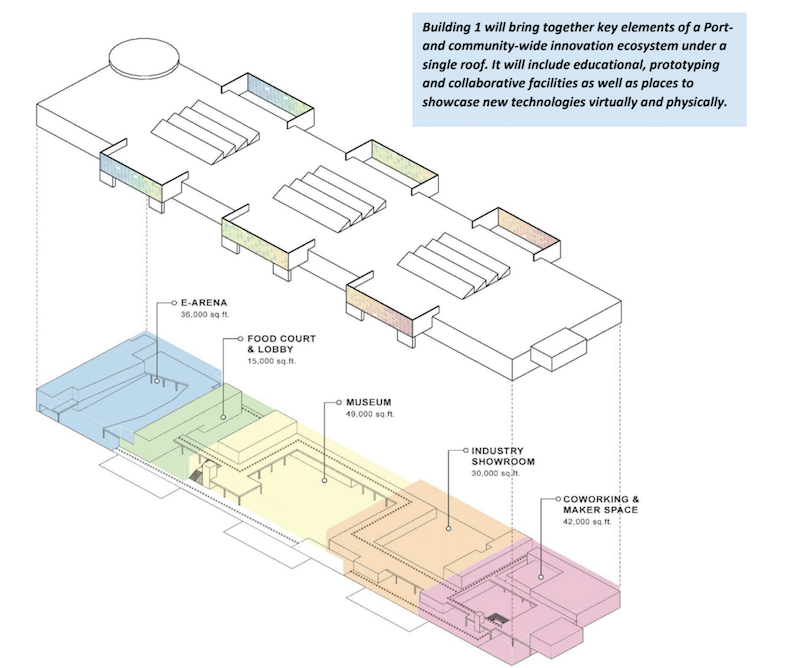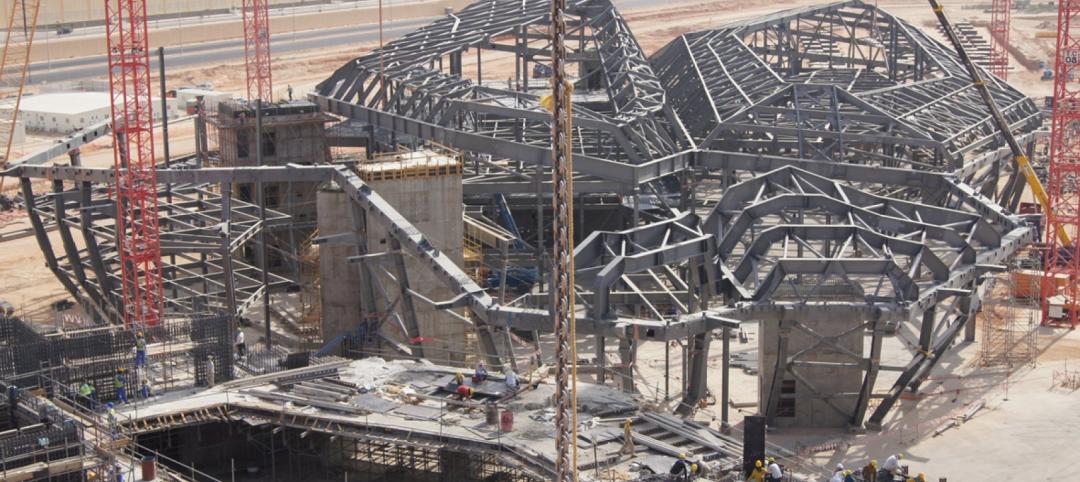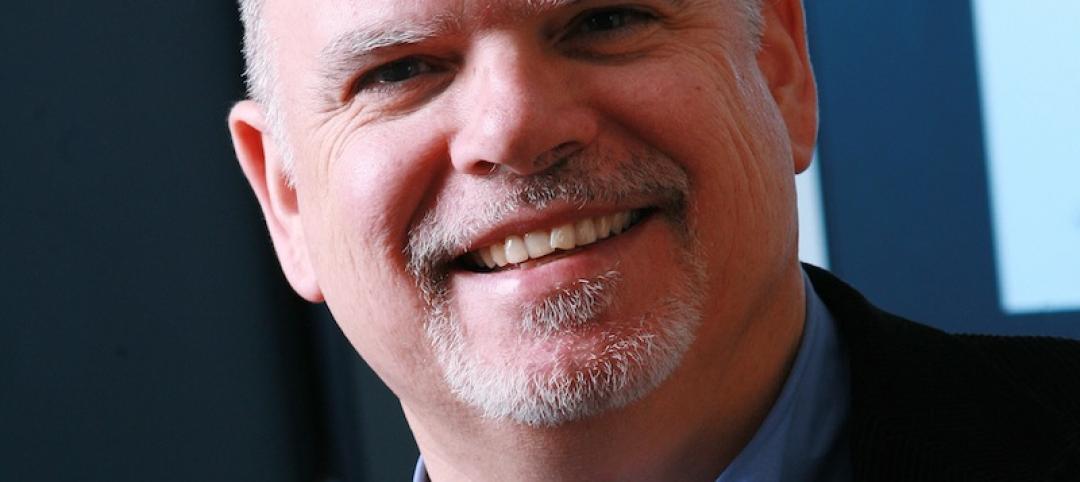The 1,900-acre Port San Antonio campus, immediately south of the country’s seventh-largest city’s downtown, is home to over 80 public- and private-sector companies and 13,000-plus workers in such fields as aerospace, defense, cybersecurity, robotics, and advanced manufacturing. The campus’ annual economic impact exceeds $5 billion.
In 2015, the Port—located at the former Kelly Air Force Base, which closed in 2001—revealed plans to focus its economic development on the goal of creating 5,000 new jobs by 2020. On February 27, the Port’s Board of Directors authorized its CEO Jim Perschback to negotiate development plans with American Triple I Partners to advance its strategic objectives.
The goal is to “leverage our Port’s unique platform and partnerships to physically and virtually connect the region’s large and well-established nature industries with the region’s innovators, and facilitate commerce and collaboration between then—leading to the development of new technologies that also have applications on a national and global scale and, as a result, drive regional economic growth,” reads the “Tech Port San Antonio” proposal that Port San Antonio presented last month.
The initial phases of the predevelopment agreement would support recent expansions by a growing number of cybersecurity firms moving onto the Port’s campus.

Port San Antonio would convert and enlarge a 130,000-sf industrial facility on its campus for an innovation center and office space for cybersecurity and defense tenants. It would also like to add a space for industrial fabrication. Image: Port San Antonio
The Port is considering a fitout of an existing flexible 130,000-sf industrial facility for an Interim Innovation Showroom and Education Center. The building—which could be expanded to 200,000 sf with the addition of a second floor—would include on its first floor a 36,000-sf 1,500-seat-capacity Technology Arena, a 49,000-sf expansion of the San Antonio Museum of Science and Technology, a 30,000-sf Industry Showroom, and 42,000 sf of coworking and maker spaces.
The predevelopment agreement also envisions150,000-sf of cybersecurity offices for a Security Operations Center, and shared/rentable space for commercial and defense operations, built to meet Sensitive Compartmented Information Facilities (SCIF) standards.
The first building of the complex is already nearly fully leased by cybersecurity company tenants such as CNF Technologies and Lockheed Martin

Improvements in one building on campus would add an arena, museum, and coworking space. Image: Port San Antonio
The predevelopment agreement foresees the creation, by 2021, of a 120,000-sf industrial fabrication and laboratory space with about 15,000 sf for open and segmented offices. The remaining, divisible space would offer multiple bays ranging from 20,000 to 50,000 sf. The Port suggests that this building could be located to provide tenants and users with access to the Port’s industrial airport.
The Port plans to pursue the establishment of an “Other Transaction Authority” to facilitate the commercialization of technologies developed through the innovation center and regional innovators, and to provide the government with rapid access to R&D and prototyping.
America Triple I Partners is a New York-based investment advisor focused on infrastructure private equity. Its Chairman and Co-CIO is Henry Cisneros, the former San Antonio mayor who under President Clinton was Secretary of the U.S. Department of Housing and Urban Development He also cofounded CityView, an investment management and development firm dedicated to urban living. American Triple I Partners is affiliated with the investment bank Siebart Cisneros Shank & Co. Its team includes William Thompson, who for eight years was New York City’s Comptroller.
Sundt Infrastructure Development is expected to support the investment group during predevelopment.
Following a 120-day predevelopment period established by the memorandum of understanding, during which additional design and feasibility research will be conducted, the Port and Triple I could formalize separate agreements for phased construction of the two projects.
Related Stories
| Feb 24, 2014
First look: UC San Diego opens net-zero biological research lab
The facility is intended to be "the most sustainable laboratory in the world," and incorporates natural ventilation, passive cooling, high-efficiency plumbing, and sustainably harvested wood.
| Feb 14, 2014
Must see: Developer stacks shipping containers atop grain silos to create student housing tower
Mill Junction will house up to 370 students and is supported by 50-year-old grain silos.
| Feb 13, 2014
Extreme Conversion: Nazi bunker transformed into green power plant, war memorial
The bunker, which sat empty for over 60 years after WWII, now uses sustainable technology and will provide power to about 4,000 homes.
| Feb 12, 2014
First Look: Futuristic Silicon Valley campus designed to draw tech startups
The curved campus will consist of four different buildings, one exclusively for amenities like a coffee bar, bike shop, and bank.
| Feb 7, 2014
Zaha Hadid's 'white crystal' petroleum research center taking shape in the desert [slideshow]
Like a crystalline form still in the state of expansion, the King Abdullah Petroleum Studies and Research Center will rise from the desert in dramatic fashion, with a network of bright-white, six-sided cells combining to form an angular, shell-like façade.
| Jan 28, 2014
16 awe-inspiring interior designs from around the world [slideshow]
The International Interior Design Association released the winners of its 4th Annual Global Excellence Awards. Here's a recap of the winning projects.
| Jan 13, 2014
Custom exterior fabricator A. Zahner unveils free façade design software for architects
The web-based tool uses the company's factory floor like "a massive rapid prototype machine,” allowing designers to manipulate designs on the fly based on cost and other factors, according to CEO/President Bill Zahner.
| Jan 11, 2014
Getting to net-zero energy with brick masonry construction [AIA course]
When targeting net-zero energy performance, AEC professionals are advised to tackle energy demand first. This AIA course covers brick masonry's role in reducing energy consumption in buildings.
Smart Buildings | Jan 7, 2014
9 mega redevelopments poised to transform the urban landscape
Slowed by the recession—and often by protracted negotiations—some big redevelopment plans are now moving ahead. Here’s a sampling of nine major mixed-use projects throughout the country.
| Dec 17, 2013
Kahn appoints Alan Cobb President and CEO
Cobb is the tenth president in the firm’s 118-year history. As President, Cobb is responsible for ensuring that all of the firm’s client issues are effectively address and that overall project team performance meets or exceeds client expectations for each and job the firm undertakes.

















